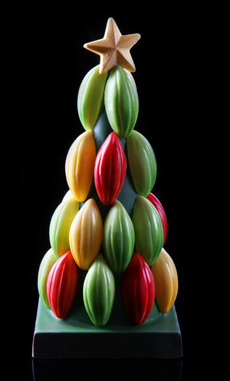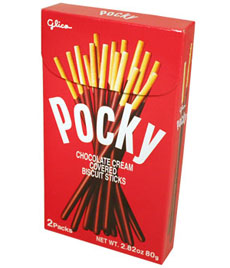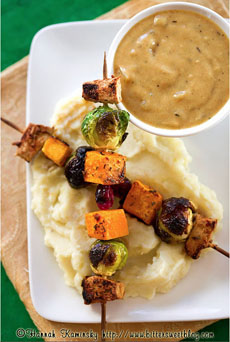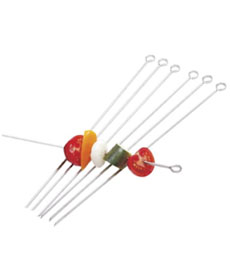|
Looking at a lot of leftovers today? Make a strata!
A strata is a layered casserole, related by eggs and cheese to a frittata or quiche, made from a mixture of bread, eggs, and cheese plus any vegetables and proteins you have on hand. You can serve it for any meal, from breakfast through dinner.
Wile it sounds Italian, the strata is actually American in origin. The earliest recipe has been found in a 1902 book, Handbook of Household Science. That first recipe used white sauce instead eggs.
Today’s variations include everything from sweet stratas like French Toast Strata to savory stratas, like the recipe below. A strata can make good use of leftovers:
Breads: baguette, brioche, challah, cornbread, panettone, whole grain, seasoned bread crumbs for topping, stuffing or any type of bread
Cheese: any type at all, from blue, goat and feta to cheddar, gruyère and mozzarella
Seasonings: chile, garlic, pesto, etc.
Fruits: apples, berries, dried fruits (including raisins), pineapple
Meats: Bacon, chicken, ham, sausage
Onions: caramelized onions, chives, leeks,
Crab, smoked salmon, tuna, any leftovers
|
|
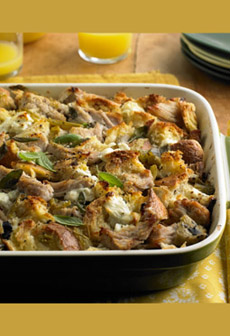
Yummy layers of eggs, bread and any leftovers you have. Photo courtesy National Pork Board.
|
|
Vegetables: asparagus, broccoli, herbs, mushroom, spinach, potato, pumpkin, tomato, zucchini
Here are hundreds of strata recipes.
This recipe is from the National Pork Board, which has many delicious recipes at PorkBeInspired.com.
RECIPE: PORK ROAST STRATA WITH GREEN CHILES & GOAT CHEESE
The National Pork Board says: This recipe is wonderful for Christmas morning or New Year’s Day because it takes advantage of the previous night’s leftover roast. You can substitute cooked sausage—breakfast or Italian—or even diced ham for the pork. On the side, serve a citrus and avocado salad and cinnamon-laced coffee.
|
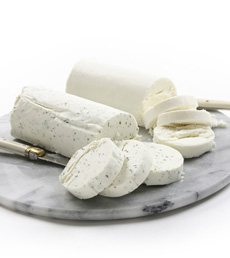
Don’t like goat cheese? Bell peppers?
Whatever? Substitute an ingredient you do
like. Photo courtesy iGourmet.com. |
|
Ingredients For 12 Servings
12 ounces cooked roast pork, shredded or cut into 1/2-inch dice (about 5 cups)
Oil spray
12 ounces crusty Italian or French bread, with crusts, cut or torn into 3/4-inch pieces (about 12 cups)
1 7-ounce can chopped green chiles
4 ounces (about 1 cup) spreadable goat cheese, crumbled*
3 tablespoons chopped fresh sage
7 large eggs
3 cups milk (regular or lowfat)
1/2 teaspoon salt
1/2 teaspoon pepper
|
|
Preparation
1. PREHEAT oven to 350°F.
2. SPRAY a 2-quart casserole dish with cooking oil. Arrange 1/2 of the bread in the dish. Top with 1/2 of the pork, 1/2 of the chiles, 1/2 of the cheese, and 1/2 of the sage. Repeat 1 time, making 2 layers. Set aside.
3. WHISK the eggs in a large bowl; then whisk in the milk, salt, and pepper. Pour egg mixture over casserole and set aside for 20 minutes, pressing on the bread occasionally to help it absorb the liquid.
4. BAKE until browned and the center is set, about 1 hour. Let stand 10 minutes before cutting and serving.
________________
*Don’t buy pre-crumbled goat cheese; it doesn’t melt as well.
CHECK OUT WHAT’S HAPPENING ON OUR HOME PAGE, THENIBBLE.COM.
|
|


